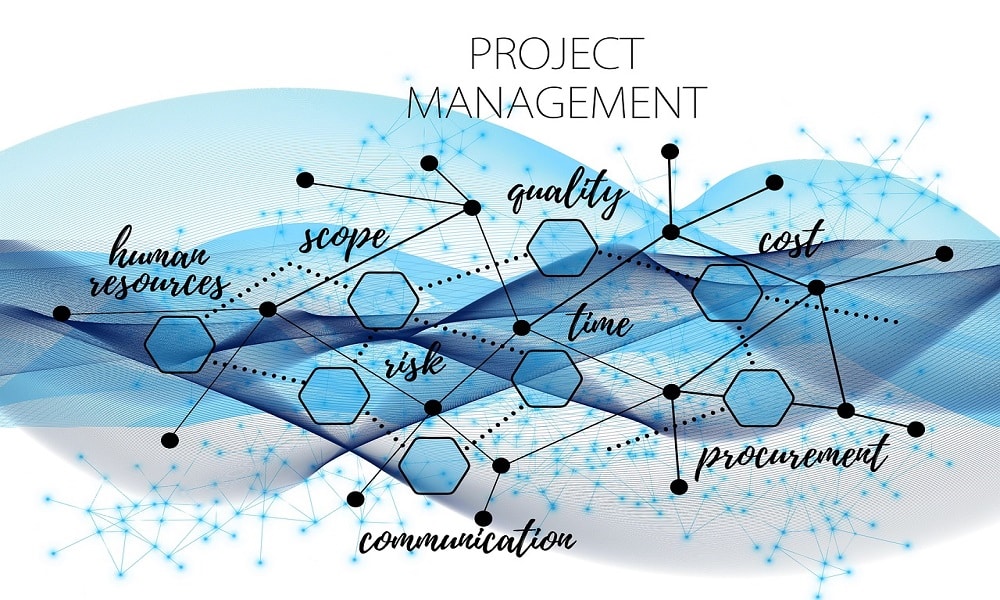Launching any new project comes with potential pitfalls that can derail progress if they are not addressed proactively. However, implementing key project management best practices helps set your team up for success. Below, we will outline some top tips across key areas, including communication, planning, team building, managing costs, and risk mitigation. Avoiding common missteps will lead to better outcomes and results. Use these project management techniques to steer clear of issues and keep your projects on track.
Effective Communication
Communication breakdowns can quickly create problems in a project. Make communication a priority by establishing regular check-ins via email, chat, or meetings to keep all members aligned. Document decisions and plans in a shared platform everyone can access like a team site or project management software. Set expectations for response times to queries. Over-communicate timeline changes and reminders on deliverables before deadlines. Taking a proactive approach prevents misunderstandings down the line.
Comprehensive Planning
Thorough planning and thoughtful scope management prevents unexpected issues mid-project. Outline detailed project plans with built-in buffer time for contingencies. Break down goals into manageable tasks and milestones. Be realistic when estimating effort and duration. Review plans regularly and adjust timelines or resource allocation as needed. Planning for potential roadblocks means you won’t be caught off guard. Consider all angles with if-then scenario planning as well.
Building a Collaborative Team
Create a collaborative team environment focused on shared goals. Outline roles and responsibilities clearly. Maintain transparency on the project status, priority shifts, or process changes. Encourage open dialogue and regular feedback loops. Show appreciation for contributions and give credit publicly. Developing camaraderie and trust leads to cohesive teamwork. Prevent silos by facilitating cross-functional coordination and knowledge sharing. Unity and joint ownership engender enthusiasm and commitment.
Keeping Costs Low
Controlling expenses is key to maintaining a budget. Track all project costs closely, including labor time and materials. Discuss the most cost-effective approaches as a team. Consider free or low-cost technology tools to maximize value. Look for opportunities to repurpose or reuse existing resources when feasible. Minimize waste through careful and accurate estimates. For example, when mailing documents, utilize online services like those offered by Certified Mail Labels to purchase only the exact number of labels needed for recipients. Additionally, switching to digital invoicing and communication tools can further reduce administrative costs, saving on paper, postage, and storage fees. Small savings soon add up, so focus on consistency to keep expenses minimal.
Mitigating Risks
Anticipating risks allows you to minimize impact. Assess potential issues such as changing priorities, personnel changes, or external factors. Develop contingency plans defining steps if major risks occur. Monitor risks continually and have a path forward ready. Communicate risks openly without placing blame. Bring in leadership or subject matter experts if the team gets stuck. Embracing transparency on risks and showing flexibility in response leads to better outcomes.
Maintaining Strong Leadership
Effective leadership plays a crucial role in guiding a project to successful completion. Leaders must communicate a clear vision, make strategic decisions, and remain accessible to support their teams. A strong leader also sets the tone for collaboration, problem-solving, and accountability. By fostering a positive and decisive leadership style, project managers can inspire confidence and keep projects moving forward even during challenging periods.
Using Technology Wisely
Choosing the right tools can streamline project management and improve overall efficiency. Many modern platforms offer features like real-time updates, task tracking, file sharing, and integration with communication systems. When selecting tools, pick those that fit your project’s scale and complexity, while keeping simplicity and ease of use in mind. A user-friendly platform saves time by reducing the need for lengthy onboarding and minimizes confusion later on. Integration with your team’s existing tools, such as email or calendar systems, also helps prevent workflow disruptions.
Technology should enhance how your team works, not complicate it. Tools that provide real-time collaboration features can eliminate delays and help teams stay on track. However, it’s important not to rely entirely on technology. Personal communication remains vital. Schedule regular meetings or video calls to maintain strong relationships, clarify expectations, and resolve issues that may not be easily addressed through software. Striking a healthy balance between using digital tools and fostering human interaction leads to more cohesive teamwork, fewer misunderstandings, and stronger project outcomes.
Reviewing and Learning Post-Project
Conducting a project review at the end helps to capture valuable lessons. Host a debriefing session to gather team feedback, analyze what worked well, and identify areas for improvement. Documenting these insights creates a foundation for future projects and helps to avoid repeating mistakes. Celebrating achievements also reinforces team morale, ensuring that every project, regardless of its outcome, contributes to continuous growth and development.
Steering clear of missteps on projects requires learning key project management techniques. Strategic planning, constant communication, collaborative teams, controlled costs and risk mitigation sets projects up for smooth execution. Avoiding common pitfalls means you can prevent derailments. With diligent effort to incorporate these tips, your next project will stay on track and yield successful results.


